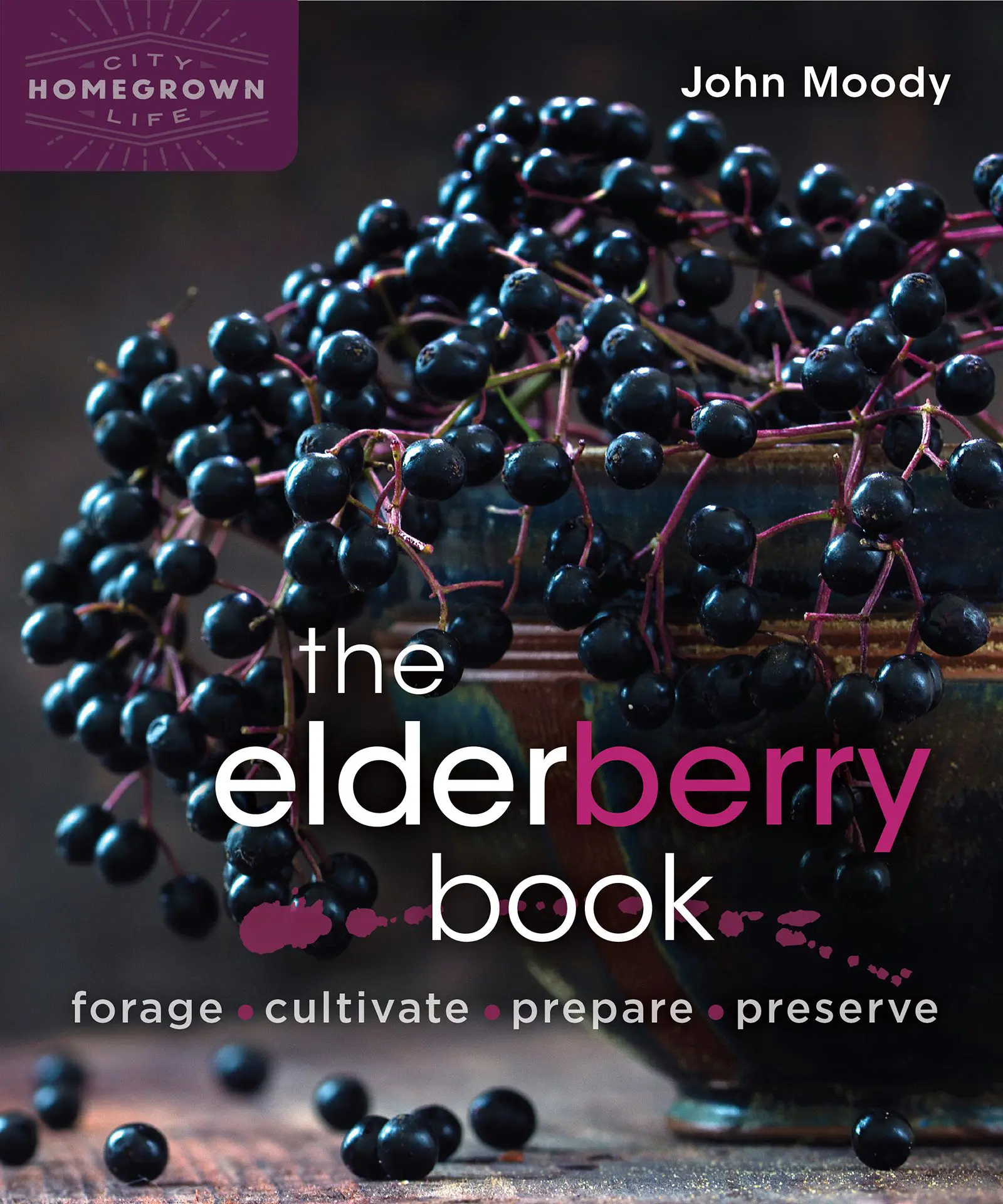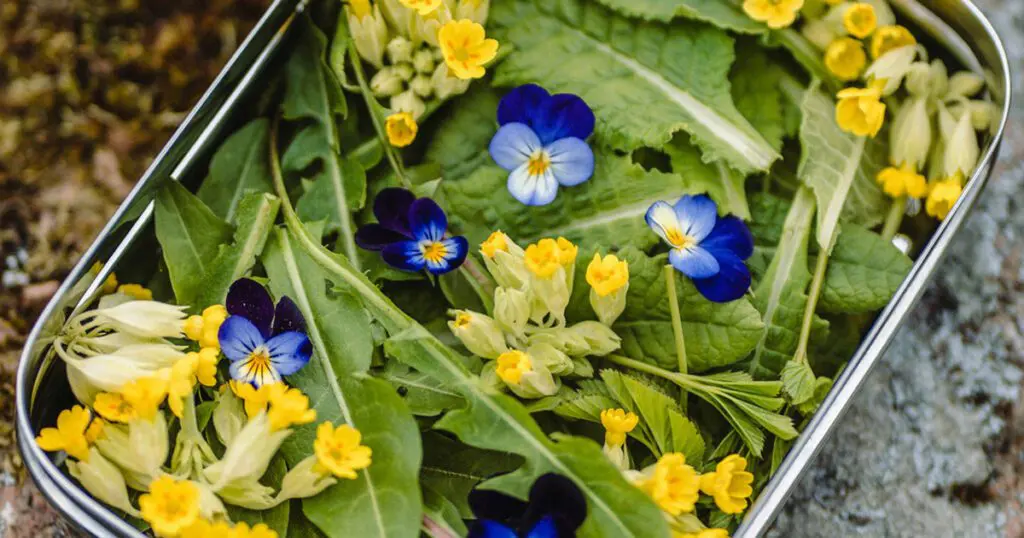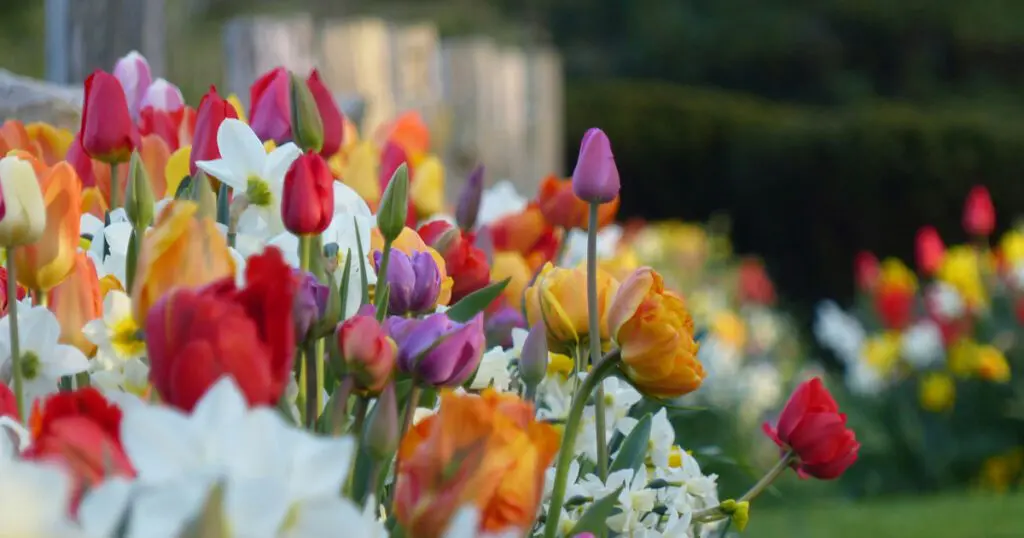
If you live in North America, perhaps the warmer and longer days have you itching to get outside. Foraging As A Way Of Life: A Year-Round Field Guide To Wild Plants offers you the opportunity to get the most out of your time outdoors by trying your hand at foraging for wild plants all year long. Gone are the days spent waiting indoors for better weather, and now is the time to add layers and see what nature offers.
Did you know that you can forage for many delicious and important plants this early in the season? In Foraging As A Way Of Life, Mikaela Cannon outlines an entire year of foraging. In early spring, she looks to wild ginger, weeping willow, Norway maple, kinnikinnick and early blue violet.
Wild Ginger, Asarum caudatum | Aristolochiaceae
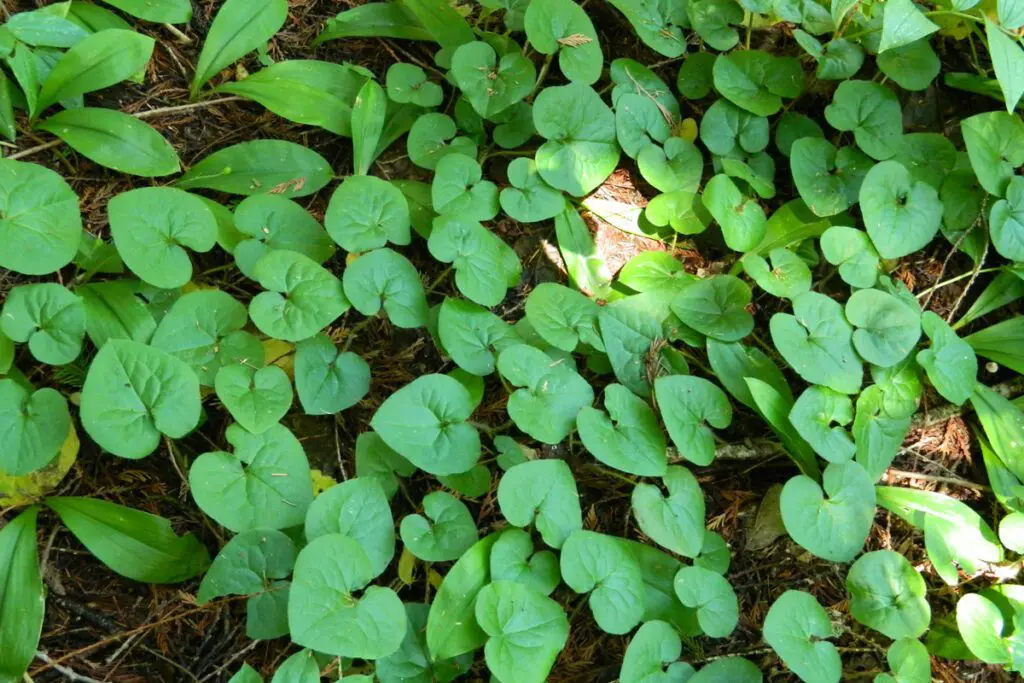
Synonyms
Long-tailed ginger, western wild ginger
Description
Ground-covering plant in moist habitats. Grows from a rhizome, at each node, there are two dark evergreen leaves. They are slightly hairy, heart shaped, and long-stalked. Flower grows at the end of a rhizome and is often hidden under the leaves. Flower is hairy, dark maroon, and has three long sepals that each taper to a point. Each sepal is generally longer than 3 cm. Seeds are dispersed by ants who are attracted to an oil on the outside of the seed. The entire plant emits a strong scent when crushed. Pollinated by flies.
Asarum means “hazelwort,” and the genus was given this name by Linnaeus. Cauda tum means “with a tail” and refers to the long sepals.
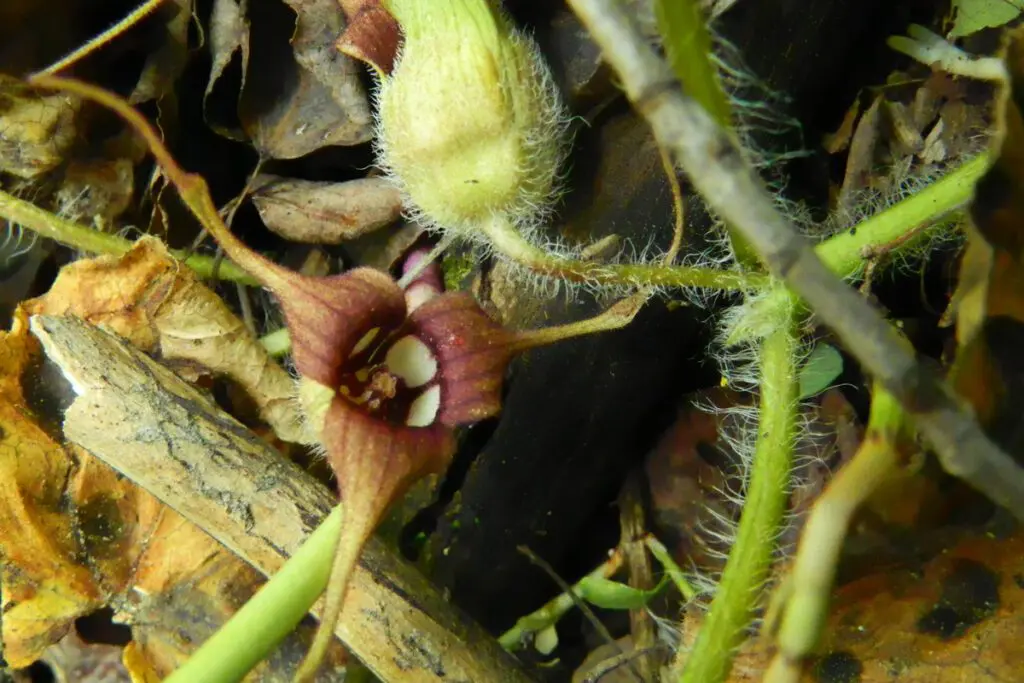
Uses
It is exciting to see wild ginger poking out from under the newly melted snow, the leaves from last year still green. The leaves are not as fresh and exciting to use at this time, but the rhizome is a lovely spring treat—potent and fragrant. We are fortunate to have an abundance of wild ginger here on the farm, but it is in danger of disappearing entirely in many places; never over-harvest this or any other plant. We usually only eat small amounts of it. You can use the root/rhizome fresh or dried; I prefer the more flavorful and less soapy taste of the dried rhizome. A little portion of it added to a stew imparts wild and wonderful undertones. I use it as a spice rather than as a vegetable. It can also be brewed as a tea.
The western North American wild ginger (Asarum caudatum) has edible leaves that have a similar taste to the rhizome, so they can re- place it. This is better for the plant, as it can recuperate from the loss of a leaf easier than a root piece. I often add a few leaves and stalks to soup, stew, or stock. These can also be used in place of the roots to brew a pleasant tea. The flavor is like commercial ginger (Zingiber officinale) but with more wild nuances.
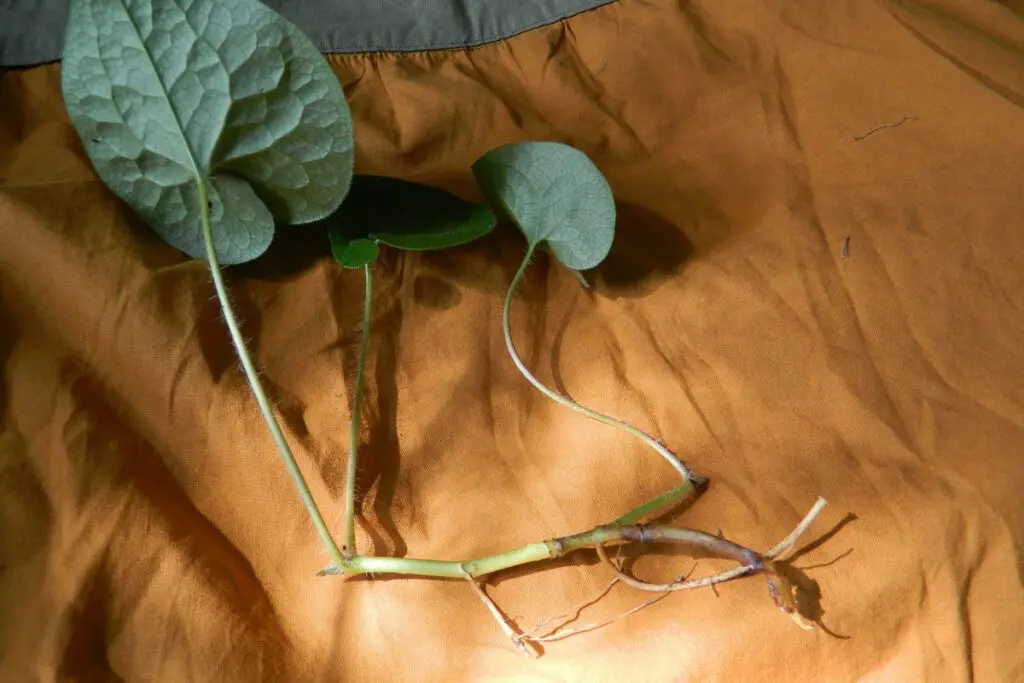
Other uses
Wild ginger plants are reported to contain aristolochic acid, which is toxic to the kidneys. For it to do damage, you need large amounts for an extended period. Avoid using this plant in vinegar or in alcohol as more aristolochic acid is then extracted. Traditionally, wild ginger was cooked or extracted in water only. If you are worried about ingesting too much aristolochic acid, using the water the plant has been steeped in and discarding the plant matter might minimize the amount ingested. Wild ginger is lauded for its antibiotic properties and helps with stomach troubles and indigestion. The leaves are antifungal and antibacterial. I use it as a tea to promote sweating when I want to flush a cold out of my system.
| Caution |
| Do not use if pregnant. Do not consume in large doses over extended periods; see text above on aristolochic acid. Be extra cautious if you have impaired kidneys. People with sensitive skin may develop rashes from the leaves. Please harvest this plant sustainably as it is in danger of disappearing in many places |
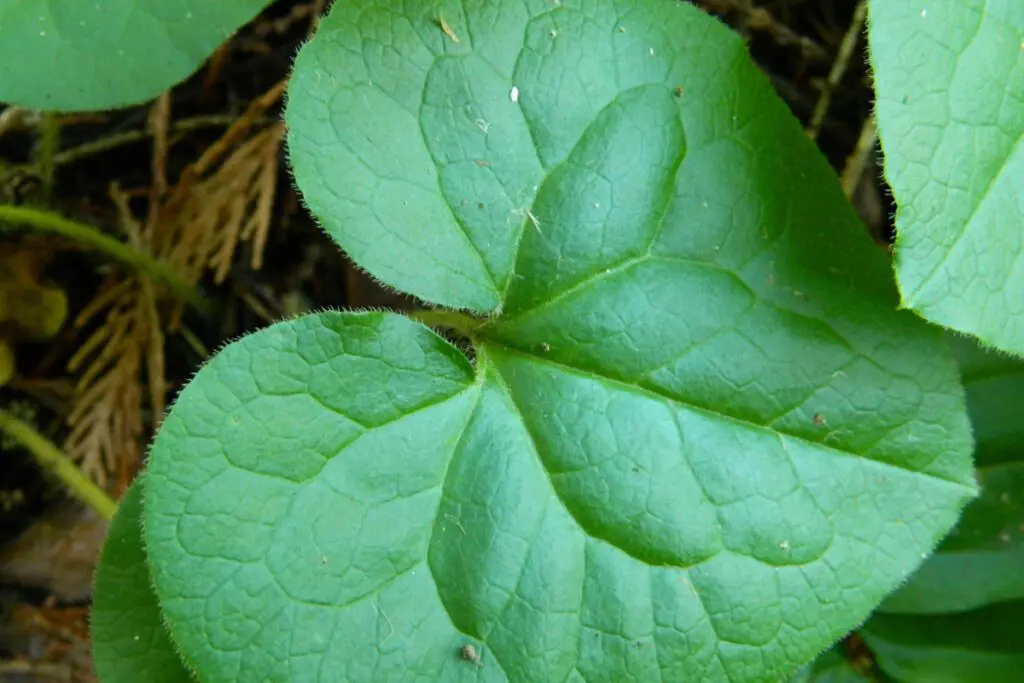
Similar species/look-alikes
- Eastern wild ginger (Asarum canadense) Note that this is a different species than western wild ginger (Asarum caudatum). Eastern wild ginger is reported by some to have poisonous leaves, while others claim that they are edible. The root is edible in both species. I do not have any experience using A. canadense, so I cannot comment on its edibility. Leaves are deciduous, and the sepals of the flower are shorter, less than 2.5 cm long.
- Early blue violet (Viola adunca) The best way to tell the two apart is by the flowers. The blue-purple violet flowers stick up above the plant and have five petals. The smell of violet differentiates it from ginger.



